
Goldfish are omnivores, which means they eat both meat and plants.
Despite what most people may believe, goldfish can’t get all the vitamins and minerals they need from pellets or flakes.
They need you to plan a healthy and balanced diet for them, which should include vegetables, fruits, pellets, and meaty treats.
In this article, you’ll find out which vegetables and fruits are good for your goldfish and how you can prepare them for feeding.
You’ll also learn recipes for frozen food, fish omelet, and gel food made with vegetables to boost your goldfish’s diet.
Can Goldfish Eat Lettuce?
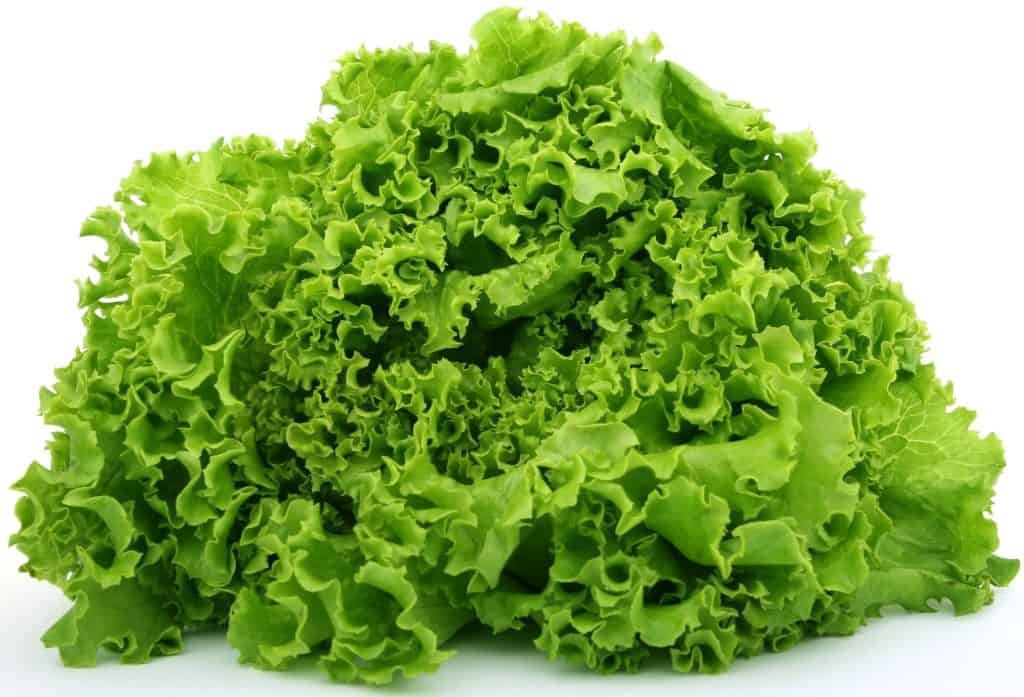
Goldfish can and love to eat lettuce.
It’s one of the vegetables that’s good for them and gives them the nutrients they need.
It’s also one of the few vegetables they can eat raw without having digestive problems.
Red leaf lettuce and romaine lettuce are the best types, as the goldfish can easily chew and digest them.
Don’t use iceberg lettuce because it doesn’t have any nutritional value.
It’s best if you rinse the lettuce in warm water and stick a lettuce leaf in the gravel for your goldfish to munch on, or clip it to the side of the tank with a plastic clip, so your goldfish can easily see and eat it.
Don’t cook the lettuce too much because it can get mushy, and the strands may get caught in your fish’s throat.
You can also chop the lettuce or put it in the blender with other vegetables and freeze it.
However, lettuce isn’t enough on its own.
You should feed your goldfish other vegetables to keep their digestive tracts clear and prevent swim bladder problems.
Other Vegetable and Fruits You Can Feed Your Goldfish
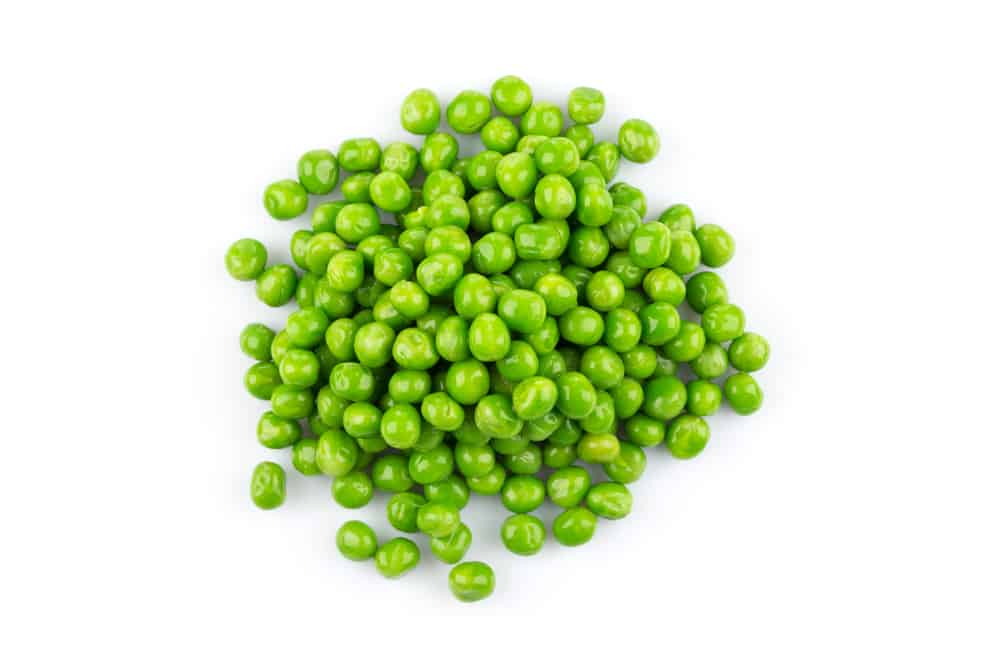
Peas are also beneficial for your fish.
Much like lettuce, they’re rich in nutrients like fiber, which prevents fish from getting constipated or relieves constipation if it happens.
You can put the peas in warm or hot water for about one minute to soften them.
You can also put them in a cup of water in the microwave.
Pinch the peel off, so they won’t suffocate your fish.
Squish the pea with your fingers and drop it in the tank.
You might have to chop them up for smaller goldfish.
Wait for your goldfish to eat the pea before dropping another one in the water.
Feed your juvenile goldfish with one or two peas, and the adults with two or three of them.
Giving goldfish peas once or twice a week will prevent constipation.
Any more than that won’t allow their bodies to absorb other essential nutrients.
If you suspect your fish is constipated, feed it peas twice a day for three days.
If the problem continues, keep going for an additional two days.
If this doesn’t solve the issue, then your goldfish may be infected with bacteria or have other diseases.
You can also freeze your soft peas and use them whenever you need them.
Just remember to remove the peel.
Another vegetable goldfish love is broccoli, which should be cooked just enough but not so much that it falls apart quickly and messes up the water.
Well-cooked zucchini and lightly-cooked asparagus tips are great options, too.
Spinach, kale, corn, cucumbers, carrots, cauliflowers, pumpkin, cabbage, and sweet potatoes are other vegetables you can feed your goldfish.
Goldfish also enjoy eating fruits like apples, grapes, mangoes, pears, oranges, bananas, berries, and watermelon.
Remember to wash the vegetables and fruits thoroughly, peel them, cut them into pieces, and cook them if needed before feeding your goldfish.
Fruits and vegetables shouldn’t make up a goldfish’s whole diet. Along with pellets or flakes, give them these greens once or twice a week as supplements.
Frozen Food Recipe with Vegetables for Goldfish
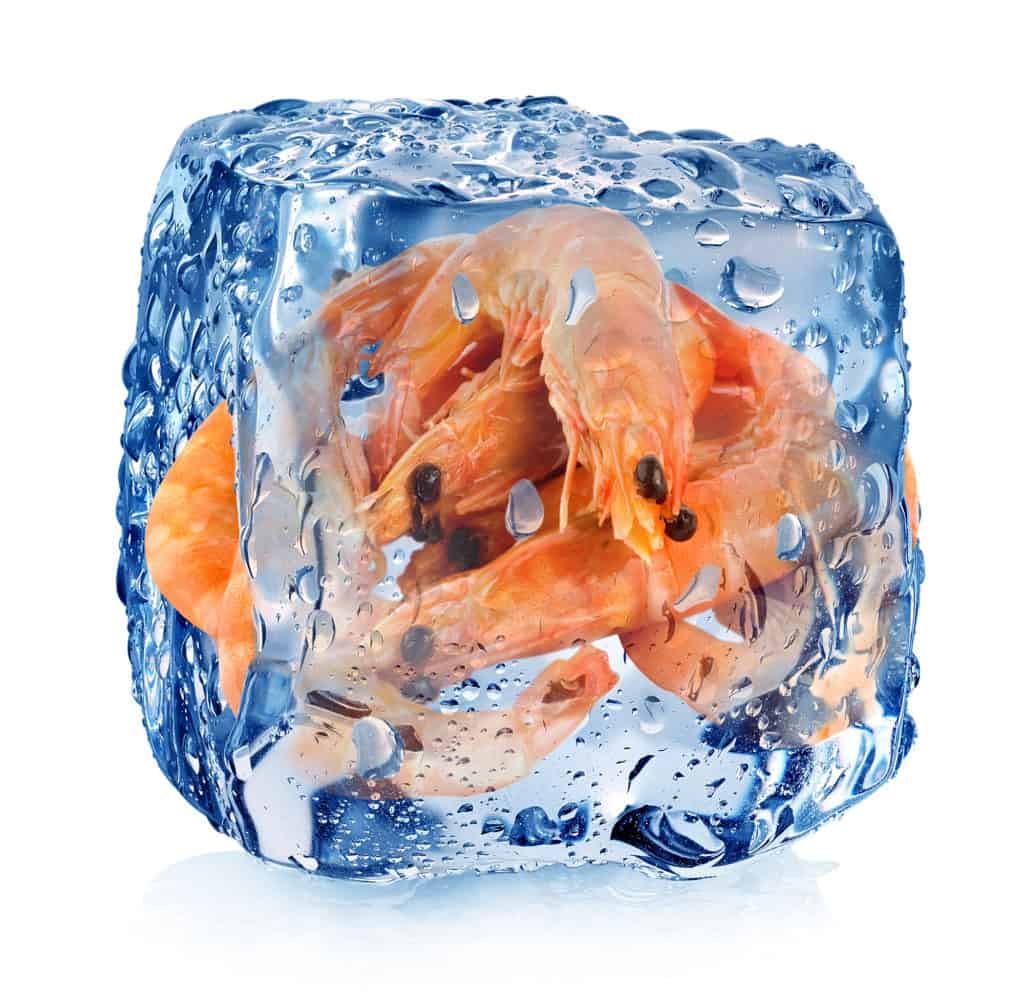
Frozen food retains all its vitamins and minerals for a long time, and it’s pretty easy to freeze different types of food.
You can use many different combinations of ingredients and add any of the vegetables mentioned above and fruits.
You can also use beef heart, chicken liver, worms, and other sources of protein.
Choose the ingredients, wash them, peel them if necessary, and put everything in a blender.
Mix them until you’re left with a paste.
Put the paste in a plastic bag and spread it into a thin sheet.
Put it in the freezer and break small chunks of it whenever you want to feed your fish.
Vegetable Omelet Recipe for Your Goldfish
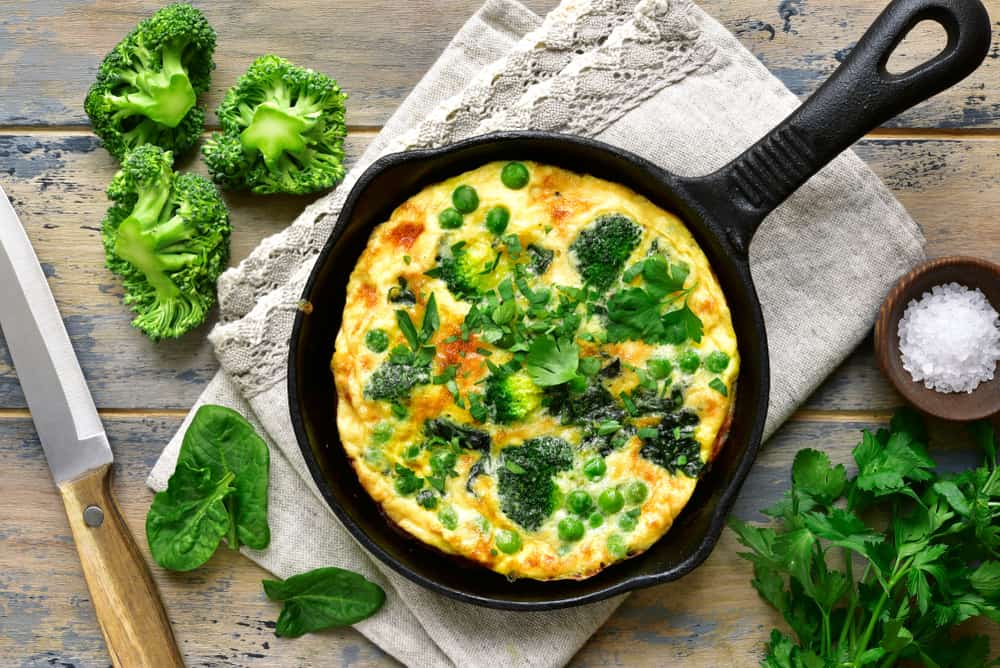
Besides vegetables, many fish and shrimps enjoy eating egg yolks, and goldfish aren’t an exception.
Though it can make a mess in the tank, egg yolk is rich in protein and helps your goldfish grow fast and strong.
Making a homemade omelet for your fish is not only easy but also saves you money on commercial fish food.
Plus, your goldfish will go wild for it!
Dice all the vegetables you choose to use, like lettuce, broccoli, carrot, etc., or use a grater to grate them into tiny pieces.
Then break an egg and separate the egg yolk.
Put it in a bowl, add a little water, and whip.
Then sprinkle the diced vegetables on it.
Steam the mixture or roast it without any oil until it forms like an omelet.
Take one small piece at a time with a spoon and drop it in the water.
Watch your goldfish enjoy their new meal.
Gel Food with Vegetables for Goldfish
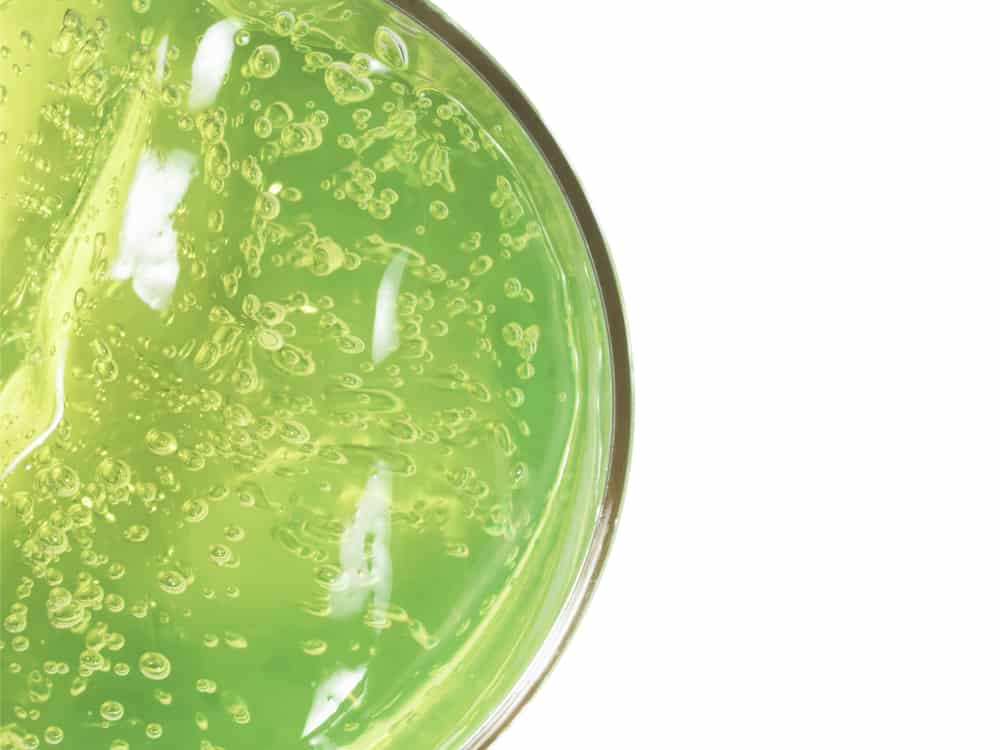
Another way to make a nutritious meal for your goldfish at home is by making gel food.
Gelatin is rich in protein. Use powdered gelatin without any colorings or flavorings.
Like frozen food and the omelet, you can create many different recipes and tastes using various vegetables.
For gel food, vegetables that can be cooked and mashed work the best. You can use potatoes, peas, zucchini, carrots, broccoli, and squash.
You can also add meaty treats like cooked fish, beef, or chicken.
Wash, peel, and cook the ingredients and mash them all up.
Put a cup of water over low heat and pour in a pack of gelatin powder.
Stir until the gelatin hardens.
Now, add all the mashed ingredients and mix them thoroughly.
You can either spread the mixture in a tray and cut it into squares or pour the mixture into an ice cube tray.
Put it in the freezer and use a piece when it’s feeding time.
Don’t Over Feed!
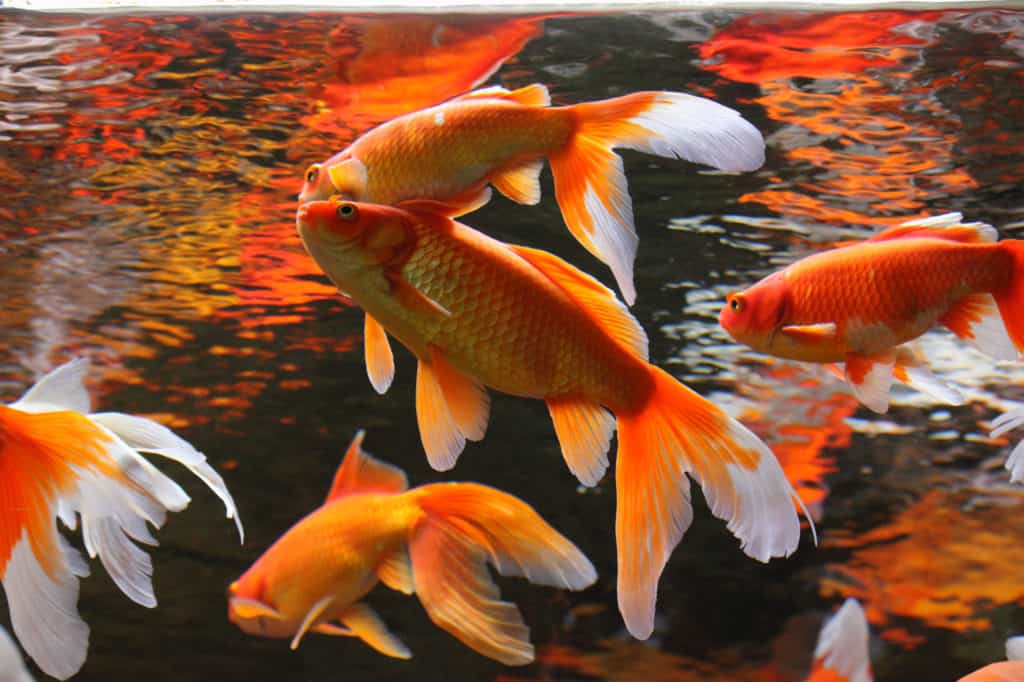
You should be very careful about overfeeding your goldfish, even if it’s with lettuce and vegetables.
Goldfish don’t have stomachs.
They only have intestines for digesting food.
This means goldfish can’t eat large portions because their food passes through the intestine rather quickly.
If you don’t feed your goldfish properly, they’ll come down with digestive problems.
Interestingly, more fish die from overfeeding than lack of nutrition.
The best way to feed your goldfish is to give them as much as they can eat in under two or three minutes.
Feed them two or three times a day.
If you notice goldfish floating, gas is trapped in their swim bladder because of a full intestinal tract.
Stop feeding them until the problem goes away and plan a better diet.
Always remove uneaten food because it can pollute the tank and produce ammonia, which is deadly to goldfish.
Frequently Asked Questions

1. Can Goldfish Eat Bread?
Goldfish can eat almost everything, and bread is not an exception, but it’s not recommended to feed them or any other fish breadcrumbs.
Bread usually swells in a fish’s intestine and can cause constipation and bloating, leading to death. It also has gluten, which is hard for fish to digest, and they’ll develop intestinal disorders.
Goldfish can live without food for one or two weeks, so even if you’re out of fish food, vegetables, fruits, and other treats, bread isn’t such a good idea.
2. Can Goldfish Eat Rice?
Goldfish can and will eat rice, but it’ll cause digestive problems.
It’s hard for goldfish to digest rice, and they’ll experience swelling, bloating, and even death after eating it.
This applies to all kinds of rice, including white, brown, and wild rice.
Plus, rice doesn’t have any nutritional value for your goldfish.
Giving your goldfish uncooked rice is practically killing it since the grain could get stuck in the fish’s intestines, causing its digestive system to shut down.
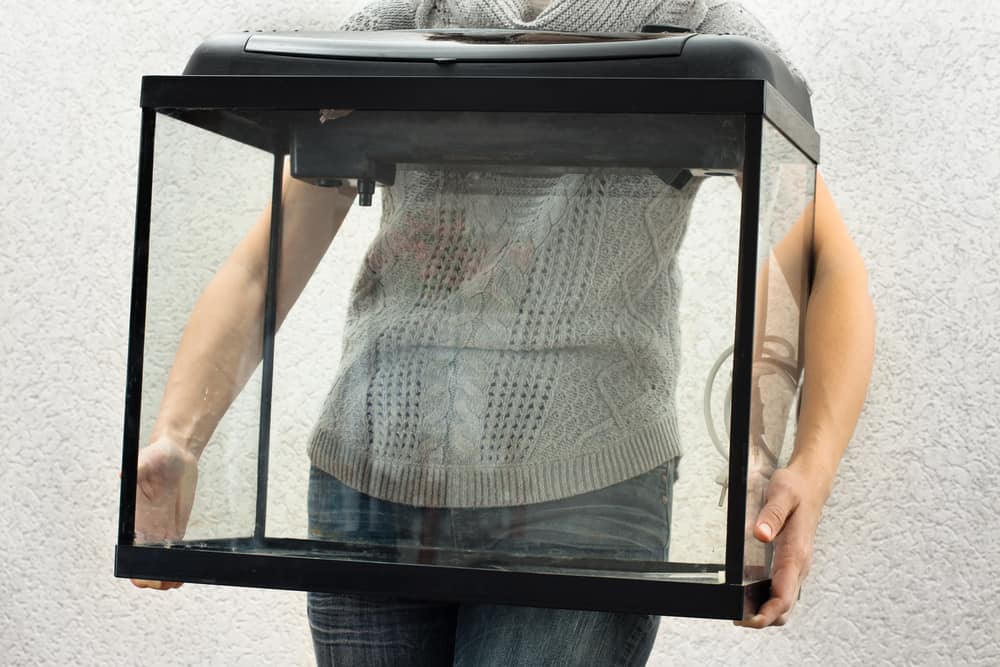

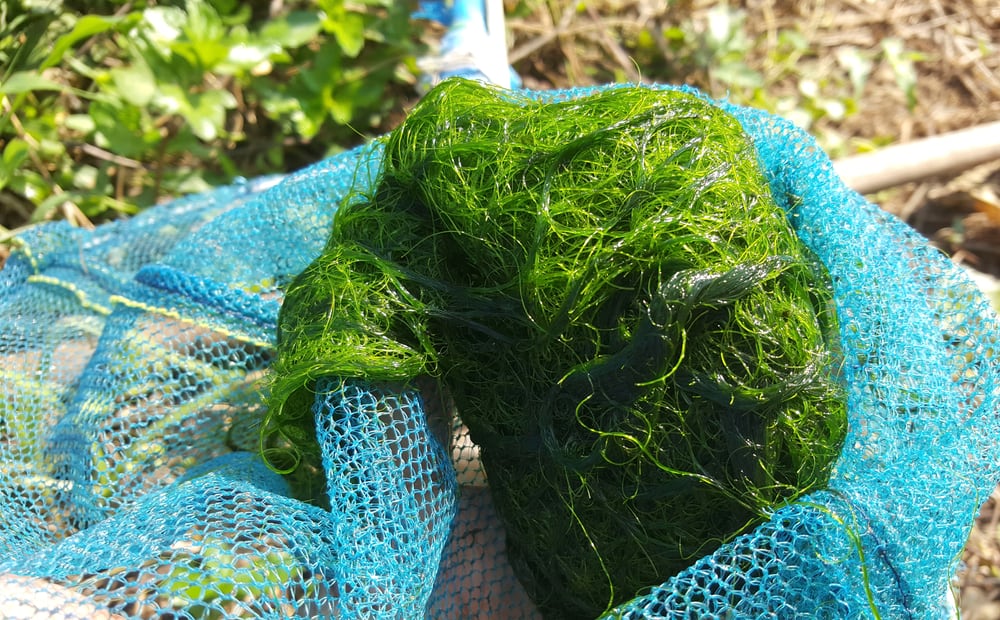
I just got some goldfish, and I am so glad i came across your article. I never knew you could feed them food. I am so excited about the facts you shared. I can’t wait to try it out as you told. Thanks